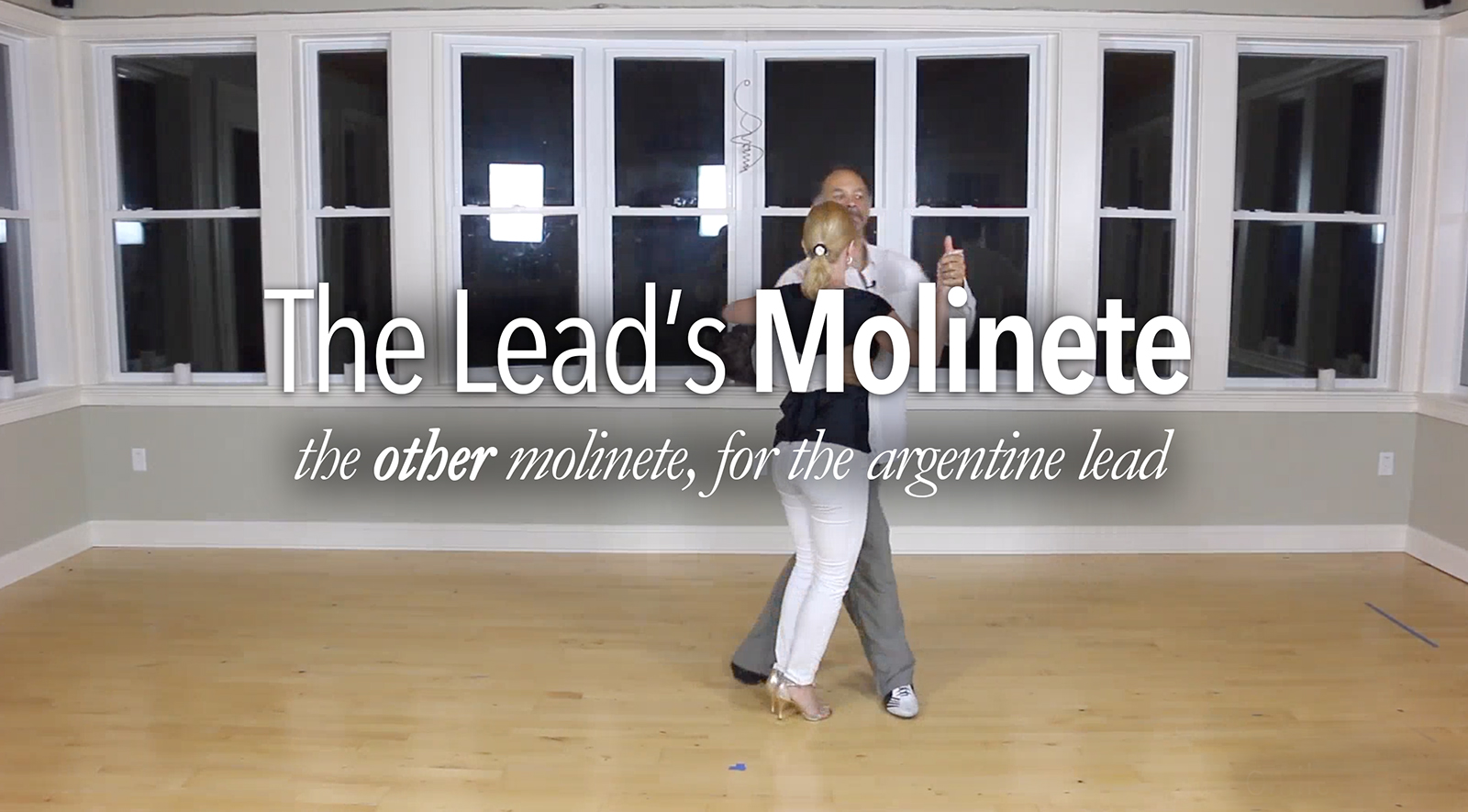Most people when they hear the word “Molinete” think of the turn that the Follower is ‘supposed’ to do. They generally commingle the Lead’s role of the ‘Giro’ (which is first person singular, from the root Spanish word ‘Girar’, which means “I turn” when translated from Spanish to English). Generally this is the common turn that is taught to all beginners as what the Follower does in order to turn. Generally speaking, nearly all, social dance possess a turn like the Follower’s Molinete, it’s called a ‘Grapevine Turn’, which basically consists of some form of a backstep, some form of a side step, and some form of a forward step. It’s just that in Argentine Tango’s version that version usually contains disassociation and then applied disassociation (or ideally we’d like it to contain that, but frequently does not). For the most part, the line of reasoning is that the Giro/Molinete construct is Follower vocabulary only. However as the title of Today’s Tango Topic implies, you’ve been fed a line of reasoning and gap that doesn’t necessarily add up. Which is to say that this is not jut for Followers! A Lead can and should engage in this idea as well! So without further adieu, today’s Tango Topic is on The Lead Molinete.
What is a LEAD Molinete ? It is exactly as described, a Grapevine Turn, that consists of an applied dissociative backstep, a ‘circular’ side step, and a dissociative forward step. That’s it. It doesn’t get any more complex than that. The only difference is that instead of the Follower doing this vocabulary, the Lead does it. However, this particular version of the Molinete can be done in Open Embrace and in Close Embrace, and almost any embrace format that you think of. It can be done to the Close Side, which is perceptional-ly easier (that’s a fallacy by the way), and to the Open Side of the the embrace. Typically you would think that going to the Close Side would be harder, it’s not. It’s the same amount of work going in either direction.

About The Video. This video comes in at 22m:07s in length in 8 Sections. Separate Follower Technique and detailed Lead Technique is explained here in the video, as well as the combined elements of what has to happen in order for a successful Lead Molinete to function.
Section 1 – Introduction – 00:01:47
Section 2 – Follower Technique – 00:03:48
Section 3 – Lead Technique – 00:02:56
Section 4 – Combined Lead & Follow – 00:04:28
Section 5 – Close Embrace Version Technique – 00:04:36
Section 6 – Close Embrace Example – 00:01:11
Section 7 – Open Side Turn – 00:01:24
Section 8 – Ending – 00:01:13

